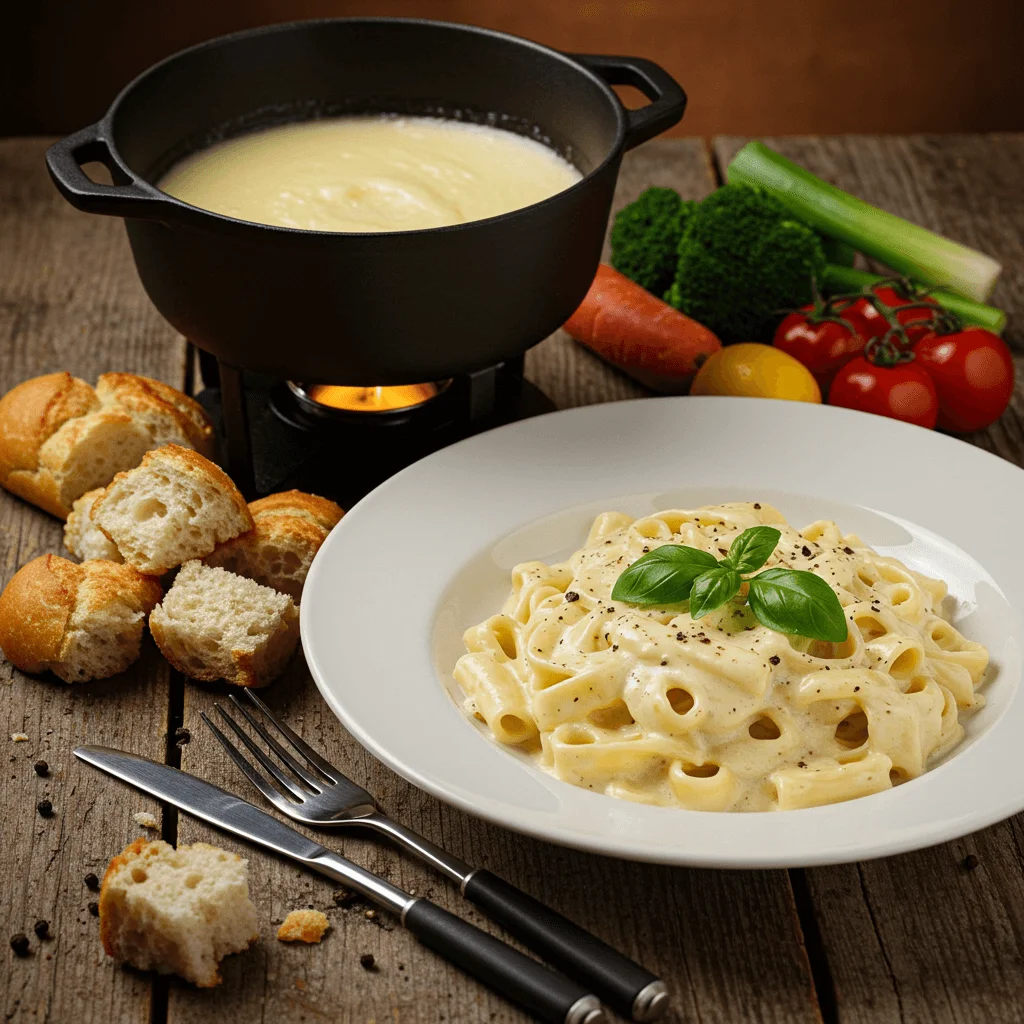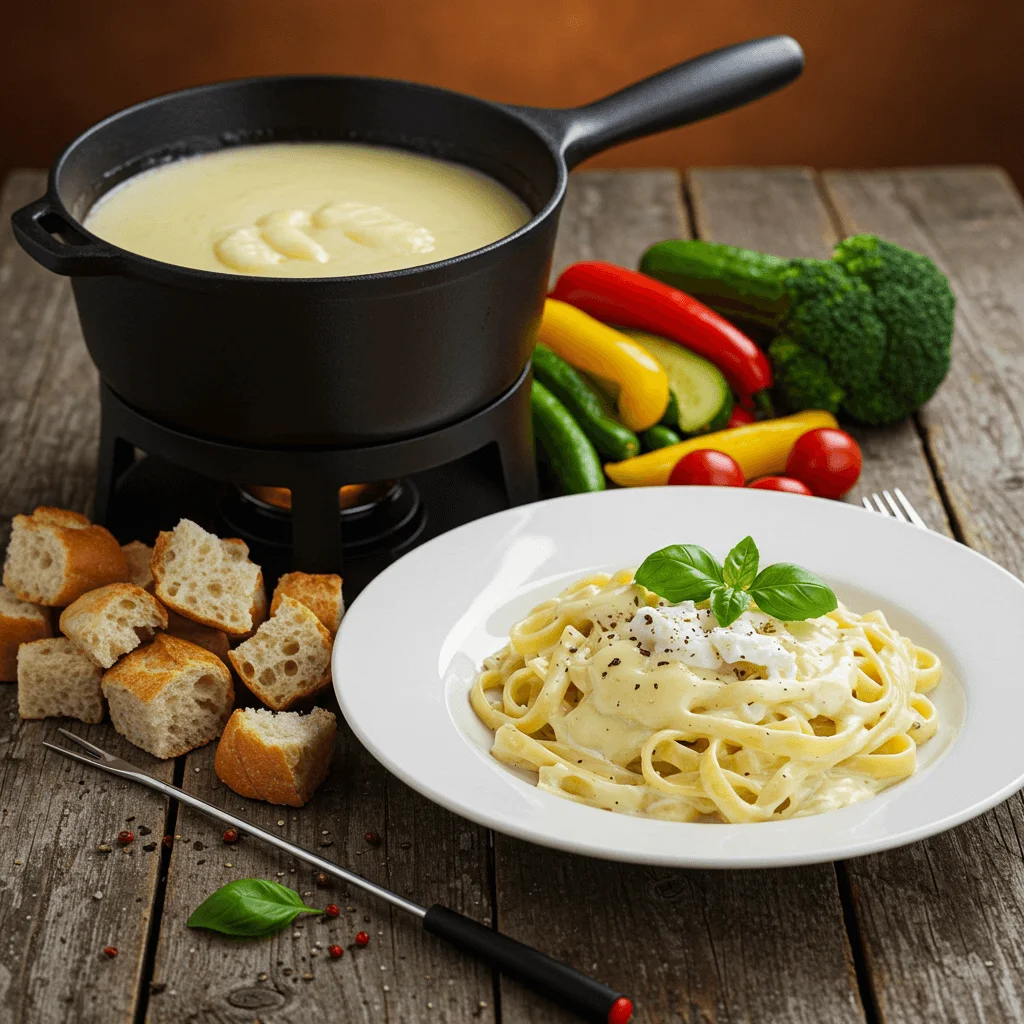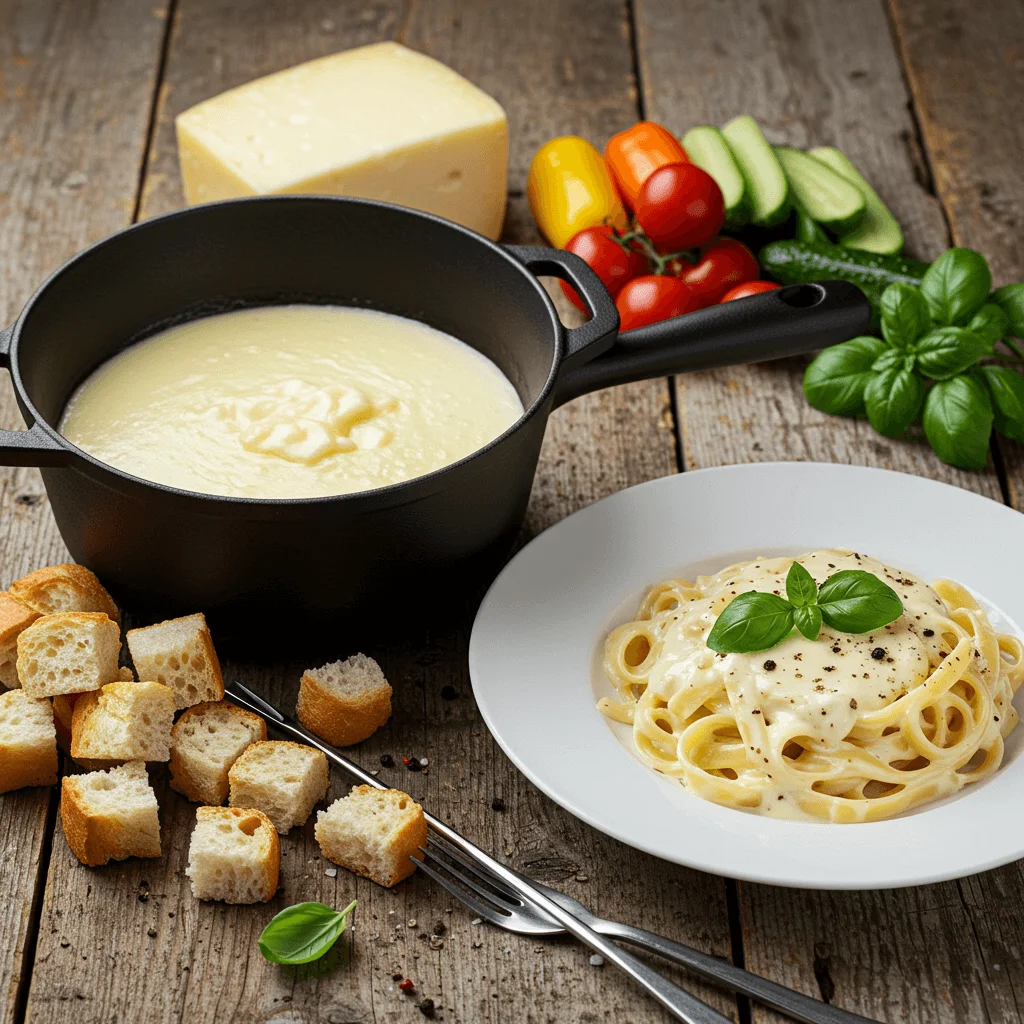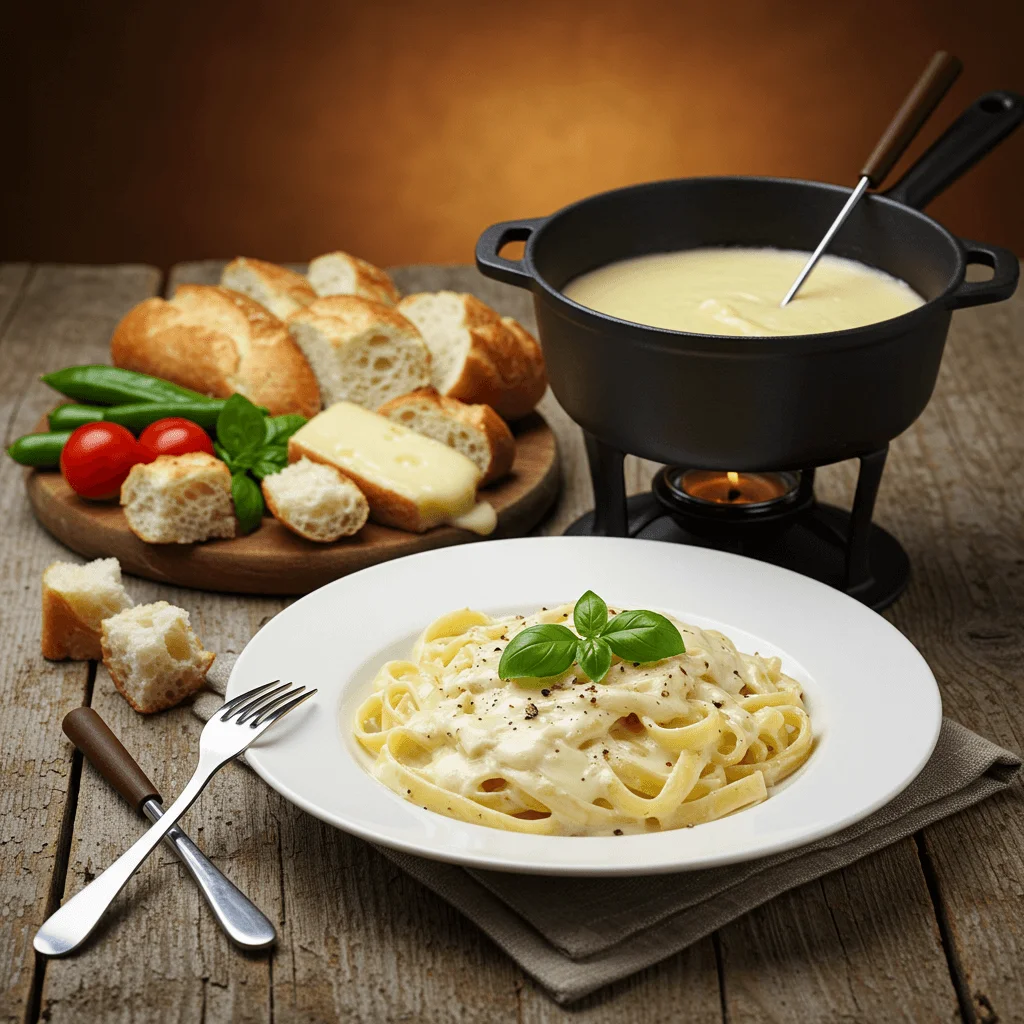Introduction:
Fontinella cheese is a creamy, semi-soft Italian cheese that brings a delightful richness and depth of flavor to any dish. Known for its smooth texture and mild, slightly tangy taste, Fontinella offers a versatile option for everything from cheese platters to savory recipes. Whether making a gourmet grilled cheese sandwich, tossing it into a fresh salad, or melting it into a decadent fondue, Fontinella adds a luxurious touch to your cooking. In this post, we’ll explore what makes Fontinella cheese so special and some delicious tips and recipes to help you incorporate this unique cheese into your meals. Get ready to elevate your cooking with the rich and savory taste of Fontinella!
What Makes Fontinella Cheese Special?

The Unique Flavor and Texture of Fontinella Cheese
Fontinella cheese is an Italian semi-soft cheese known for its smooth, creamy texture and well-balanced flavour profile. Its taste is mild yet rich and slightly tangy, with a subtle nutty undertone that develops as it ages. This unique combination of flavours makes Fontinella a versatile addition to various dishes.
One of the defining characteristics of Fontinella is its smooth and supple texture, which is not as firm as other cheeses like cheddar or Gouda. This makes it ideal for melting, making it a favourite choice for gourmet grilled cheese sandwiches or cheese fondue. When heated, the cheese softens to a velvety consistency, creating a perfect, gooey melt that enhances any dish.
The flavour of Fontinella is distinct yet approachable. It offers a mild, milky taste, which becomes more robust as the cheese ages. Young Fontinella tends to have a more delicate, creamy profile, whereas aged Fontinella develops a deeper, slightly sharper flavour. The ageing process adds complexity, with subtle earthy and savoury notes emerging as the cheese matures.
When compared to other popular cheeses like cheddar or Parmigiano-Reggiano, Fontinella falls somewhere in between—it’s softer than cheddar and less pungent than Parmigiano, but it still offers a satisfying depth of flavour. This balance makes it an ideal ingredient for everyday meals and more sophisticated culinary creations.
Fontinella cheese’s texture and flavour are also influenced by its milk source. Traditionally made from cow’s milk, Fontinella’s rich, creamy consistency is due to its high-fat content, which contributes to its smooth mouthfeel. As with most cheeses, the quality of the milk plays a crucial role in achieving that perfect balance of richness and mildness.
Fontinella Cheese Varieties and Aging
Fontinella cheese is available in various forms, and the aging process plays a crucial role in determining its flavor, texture, and overall characteristics. There are typically two main varieties of Fontinella: young and aged, each offering a distinct experience for your taste buds. Understanding the differences between these varieties will help you choose the perfect Fontinella for your recipes.
Young Fontinella Cheese
Young Fontinella is the fresher variety of this cheese, typically aged for a shorter period—often just a few weeks. It has a soft, smooth texture and a mild, creamy flavor profile. The taste is subtle, with a slight sweetness and delicate milky notes. Young Fontinella is a perfect choice for dishes where the cheese’s flavor needs to complement other ingredients without overpowering them. It’s ideal for sandwiches, salads, and pasta dishes where the cheese melts smoothly without becoming too sharp or tangy.
Because of its milder taste and softer texture, young Fontinella is also a fantastic option for cheese platters. It pairs wonderfully with fresh fruits like pears or apples and mild crackers, making it a delightful addition to any charcuterie board. The creaminess of young Fontinella makes it a crowd-pleaser for people who enjoy cheeses with a more subtle flavor.
Aged Fontinella Cheese
Aged Fontinella, on the other hand, undergoes a longer maturing process, typically ranging from a few months to over a year. As the cheese ages, its flavor becomes more intense and complex. The texture also changes, becoming firmer and crumblier as moisture is lost during aging. The resulting flavor is richer and savory, with hints of nuttiness and earthiness. Aged Fontinella tends to have a slightly sharp, tangy taste, which makes it perfect for adding depth to more robust dishes like fondues, gratins, and even savory pastries.
The aging process also allows Fontinella to develop more crystalline structures, similar to those found in Parmigiano-Reggiano, adding a satisfying crunch to the texture. Aged Fontinella can stand up to stronger flavors, making it an excellent choice for recipes that require a more pronounced cheese presence. It also pairs well with red wines, like Cabernet Sauvignon or Chianti, complementing its bold and savory notes.
The Aging Process: What Happens to Fontinella?
Fontinella undergoes several changes during aging that affect its texture, flavor, and aroma. When Fontinella is young, its moisture content is higher, giving it a smooth and soft texture. As the cheese matures, moisture evaporates, and the cheese becomes firmer. Additionally, enzymes in the cheese break down proteins and fats, which enhances the flavor and creates the complex, nutty, and tangy notes found in aged Fontinella.
The environment in which the cheese is aged also influences its characteristics. Fontinella aged in a controlled, temperature-regulated environment will have a more consistent texture and flavor profile. Traditional aging processes, like those in wooden aging rooms, can impart slight variations in flavor due to exposure to the wood or other environmental elements.
The variety of Fontinella cheese you choose will depend on the dish you’re preparing and the kind of flavor you want to achieve. Whether you go for the creamy mildness of young Fontinella or the intense, nutty richness of aged Fontinella, both varieties bring a unique and flavorful experience to your culinary creations.
Ideal Pairings for Fontinella Cheese
Fontinella cheese, with its creamy texture and subtly nutty flavor, is an incredibly versatile cheese that pairs beautifully with various foods and beverages. Whether serving it as part of a cheese platter or incorporating it into a dish, knowing the best pairings will elevate your culinary experience and bring out the best in this flavorful cheese.
Wine Pairings for Fontinella Cheese
Fontinella’s mild, creamy taste and slightly nutty undertones make it an excellent match for wines that balance its richness without overpowering it. Here are some great wine-pairing options:
- White Wines: Fontinella cheese pairs wonderfully with crisp white wines that offer bright acidity to cut through the creaminess of the cheese. Wines like Chardonnay (particularly unoaked), Sauvignon Blanc, and Pinot Grigio complement Fontinella’s smooth texture and mild flavor. The acidity of these wines enhances the cheese’s natural tanginess and provides a refreshing contrast.
- Light Red Wines: For those who prefer red wine, a light-bodied red like Pinot Noir or Gamay (from Beaujolais) works wonderfully with Fontinella. These reds have enough acidity and fruitiness to match the cheese’s complexity without overwhelming its delicate flavors.
- Sparkling Wines: If you’re looking for a celebratory pairing, try Prosecco or a dry Cava. The effervescence of sparkling wines acts as a perfect palate cleanser, refreshing the mouth between cheese bites while enhancing the cheese’s creaminess.
Food Pairings for Fontinella Cheese
In addition to wine, Fontinella cheese pairs well with various foods that highlight its rich, savory flavor. Here are some great food pairings to consider:
- Charcuterie and Cured Meats: Fontinella’s creaminess is a perfect counterpoint to the saltiness of charcuterie. Try pairing it with thinly sliced prosciutto, salami, or soppressata. The contrast of textures—creamy cheese and meaty saltiness—creates a delightful combination.
- Fruits and Nuts: Sweet and savory pairings can bring out the best in Fontinella’s subtle tang. Fresh fruits like pears, apples, and grapes are excellent choices; their natural sweetness complements the cheese’s richness. Dried fruits, like apricots or figs, also pair well for an added layer of sweetness. For a crunchy contrast, pair Fontinella with walnuts, almonds, or hazelnuts.
- Bread and Crackers: Fontinella cheese is a natural addition to any cheese platter, and it pairs wonderfully with various bread and crackers. Try baguette slices, crusty sourdough, or water crackers for a mild, neutral base. The slight saltiness of sea salt crackers can enhance the creaminess of Fontinella and offer a satisfying crunch.
- Vegetables: Fontinella also shines in vegetable-forward dishes. Its mild flavor works beautifully in grilled vegetables like zucchini, eggplant, or bell peppers. The slight sweetness of roasted tomatoes or carrots also complements the creamy, nutty notes of the cheese. Pair it with fresh arugula, spinach, or a crisp mixed green salad for a refreshing contrast.
Fontinella in Cooking and Savory Dishes
Fontinella cheese’s melting ability and mild, creamy flavor make it a wonderful ingredient in various savory dishes. Here are a few ideas for incorporating Fontinella into your meals:
- Grilled Cheese Sandwiches: Fontinella melts beautifully, making it a great choice for cheese sandwiches. Try pairing it with tomato slices, basil leaves, or a splash of balsamic vinegar for an elevated take on this classic comfort food.
- Cheese Fondue: The smooth melting quality of Fontinella makes it perfect for a creamy cheese fondue. Combine it with other cheeses like Gruyère or Emmental for a Swiss-style fondue, and serve with cubes of bread, apples, or vegetables for dipping.
- Pasta Dishes: Fontinella is a great cheese to add to pasta dishes, especially when making creamy sauces. Try it in a mac and cheese recipe, or stir it into a pasta bake for extra richness. You can even sprinkle grated Fontinella over a baked pasta dish to create a golden, cheesy topping.
Additional Pairing Ideas
- Honey and Jam: Fontinella can also be paired with honey or fruit preserves, such as fig jam or apricot jam, for a sweet-savory combination. The honey’s sweetness balances the cheese’s savory richness, making it a delightful pairing on a cheese board.
- Herbs and Spices: Fresh thyme, rosemary, or basil can add aromatic notes that enhance Fontinella’s natural flavor. A sprinkle of black pepper or chili flakes can also add a touch of heat to contrast the cheese’s creaminess.
Delicious Recipes Using Fontinella Cheese

Fontinella Cheese in Grilled Cheese Sandwiches
Grilled cheese sandwiches are a beloved comfort food, offering the perfect combination of crispy, golden bread and creamy, melted cheese. While classic grilled cheese often features cheddar or American cheese, Fontinella cheese brings a whole new dimension to this dish with its smooth texture and mild, nutty flavour. Its unique qualities make it a perfect candidate for creating a more sophisticated yet still comforting grilled cheese sandwich.
Why Fontinella is Perfect for Grilled Cheese
Fontinella cheese melts beautifully, transforming into a luscious, creamy filling between slices of crisp, golden-brown bread. Its mild, milky flavour with a subtle nutty undertone adds depth to the sandwich without overpowering the other ingredients. Whether you prefer a simple grilled cheese or enjoy elevating it with extra toppings, Fontinella offers versatility and richness that enhances the overall experience.
Fontinella’s ability to melt smoothly and evenly ensures a uniform consistency, creating that perfect gooey, melt-in-your-mouth effect that makes a grilled cheese sandwich irresistible. Unlike some firmer cheeses, Fontinella doesn’t become greasy or stringy, making it ideal for a smooth, balanced melt. This makes it an excellent choice for those who love cheese that provides texture and flavour without being too heavy.
Pairing Fontinella with Other Ingredients
While Fontinella works wonderfully in a grilled cheese sandwich, it also pairs beautifully with various other ingredients that add layers of flavour and texture. Here are a few ideas to enhance your Fontinella grilled cheese sandwich:
- Tomatoes: Fresh, juicy tomato slices are a classic addition to any grilled cheese sandwich. The acidity of the tomato balances the creamy richness of Fontinella, adding a refreshing contrast. For a twist, try roasting or grilling the tomatoes first to intensify their flavour and create a deeper, savoury note.
- Basil: Fresh basil leaves add a fragrant herbal note that pairs beautifully with Fontinella’s creamy texture. The peppery, aromatic basil flavour perfectly contrasts the smooth melt of the cheese, making each bite more complex and aromatic.
- Caramelized Onions: Add caramelized onions to your grilled cheese sandwich for sweetness and umami. The rich, savoury flavour of the onions complements the mild nuttiness of Fontinella, creating a savoury and satisfying sandwich.
- Prosciutto or Bacon: If you’re craving something more indulgent, adding a slice of prosciutto or crispy bacon can bring a salty, savoury element to the sandwich. The salty cured meats contrast nicely with the creaminess of Fontinella, creating a delicious balance of flavours.
- Pesto: Spread a little pesto on the bread before grilling for an added flavour. The basil and garlic in the pesto complement Fontinella’s mild nutty undertones, enhancing the overall taste profile of the sandwich.
Different Types of Bread for Fontinella Grilled Cheese
The type of bread you use can significantly affect the texture and flavour of your grilled cheese sandwich. For a Fontinella sandwich, you’ll want a hearty bread that can hold up to the creamy cheese without becoming soggy. Here are a few bread options that pair beautifully with Fontinella:
- Sourdough: The slightly tangy flavour of sourdough bread complements Fontinella’s mild flavour, creating a perfect balance of richness and acidity. The sturdy texture of sourdough also provides a nice crunch when toasted.
- Ciabatta: A soft, airy ciabatta with a slightly crispy crust is a fantastic choice for a Fontinella grilled cheese. Its open crumb structure melts the cheese beautifully, and its rustic texture contrasts with the creamy cheese.
- Whole Wheat: For a healthier take, whole wheat bread adds a nutty, earthy flavour that pairs well with Fontinella’s creamy richness. The hearty nature of the bread complements the cheese’s smooth texture and provides a more filling sandwich.
- Brioche: If you’re looking for something more indulgent, brioche bread adds a touch of sweetness and a soft, buttery texture that elevates the grilled cheese experience. The richness of the brioche enhances the creaminess of the Fontinella, making it an extra luxurious treat.
Grilled Cheese Variations with Fontinella
To further elevate your grilled cheese sandwich, consider experimenting with different variations. Here are some ideas to inspire your next sandwich creation:
- Fontinella and Roasted Vegetable Grilled Cheese: Add roasted zucchini, eggplant, and bell peppers to your grilled cheese sandwich for a delicious, veggie-packed version. The roasted vegetables add sweetness and depth, complementing the mild nuttiness of Fontinella.
- Fontinella and Avocado: Add sliced avocado to your Fontinella grilled cheese for a creamy, rich twist. The buttery texture of the avocado pairs wonderfully with the melt-in-your-mouth cheese, creating a satisfying and luxurious sandwich.
- Fontinella and Mushroom: Sautéed mushrooms bring an earthy, umami flavour to the sandwich that pairs beautifully with Fontinella’s creamy texture. Consider using cremini or shiitake mushrooms for a more complex, savoury taste.
- Fontinella and Spicy Mustard: Add a layer of spicy mustard to your grilled cheese sandwich for a tangy kick. The heat and acidity of the mustard contrast nicely with the creaminess of Fontinella, giving the sandwich a zesty edge.
Serving Suggestions
Once your Fontinella grilled cheese sandwich is cooked to perfection, you can pair it with various sides and accompaniments for a complete meal. Consider serving it with:
- Soup: A classic tomato soup or a rich butternut squash soup complements the creamy, cheesy sandwich and creates a comforting, warming meal. The smooth texture of the soup pairs perfectly with the crispy melted sandwich.
- Pickles: The sharp, tangy taste of pickles offers a wonderful contrast to the richness of the cheese, cutting through the creaminess and adding a satisfying crunch. Depending on your preference for tart or sweet, you can use dill pickles or bread-and-butter pickles,
Fontinella Cheese in Salads and Platters
Fontinella cheese is versatile and can elevate various dishes, particularly in salads and cheese platters. Its mild, nutty flavour and smooth texture make it an ideal cheese to incorporate into fresh salads and charcuterie platters, adding richness without overpowering other ingredients. Whether preparing a light, refreshing salad or a vibrant grazing platter, Fontinella can enhance the flavour profile by balancing creaminess and depth.
Fontinella in Salads: A Creamy, Nutty Addition
Salads are a wonderful canvas for experimenting with different cheeses, and Fontinella brings a unique twist with its nutty yet mild flavour. It’s a cheese that adds richness while maintaining balance, making it the perfect accompaniment to green and grain-based salads.
- Leafy Green Salads: Fontinella’s smooth texture and delicate flavour make it a great pairing with mixed greens like arugula, spinach, or baby kale. The cheese can be crumbled or shaved into thin slices to add a touch of creaminess to each bite. Pairing Fontinella with a tangy vinaigrette—made with lemon, balsamic vinegar, or white wine vinegar—helps to balance the cheese’s richness, creating a refreshing and satisfying salad.
- Citrus Salads: For a salad that bursts with flavour and freshness, pair Fontinella with citrus fruits such as oranges, grapefruit, or even pomegranate seeds. The acidity from the citrus cuts through the cheese’s creaminess and enhances its mild, nutty flavour. Adding toasted nuts like walnuts or pecans provides a delightful crunch, making the salad more texturally appealing.
- Grain-Based Salads: Fontinella works wonderfully in grain-based salads, such as quinoa, farro, or bulgur wheat salads. The heartiness of the grains complements the creaminess of Fontinella, while the cheese’s subtle flavour enhances the dish’s overall taste. Adding roasted vegetables, such as sweet potatoes, beets, or zucchini, offers a smoky sweetness that pairs nicely with Fontinella’s mild taste.
- Mediterranean-Inspired Salads: If you enjoy Mediterranean flavours, Fontinella can be the perfect addition to salads with ingredients like cucumbers, cherry tomatoes, olives, red onions, and herbs like oregano or mint. The cheese’s creamy, slightly tangy flavour complements these bold, briny ingredients without competing with them, enhancing the salad’s overall flavour.
Fontinella Cheese Platters: Elegant and Flavorful
Fontinella cheese makes an excellent choice for creating stunning cheese platters, whether for a casual gathering or an elegant dinner party. Its flavour profile, which sits between a semi-soft and semi-firm cheese, offers the ideal balance for pairing with other cheeses, meats, and accompaniments.
- Cheese Platter Pairings: When creating a cheese platter, it’s essential to offer a variety of textures and flavours. Fontinella’s smooth, nutty flavour makes it a great addition to platters with other cheeses like brie, manchego, gouda, or cheddar. Fontinella’s mildness complements a brie’s creaminess or a cheddar’s sharpness, providing contrast and enhancing the tasting experience. The cheese’s smooth texture also balances out firmer cheeses, ensuring a harmonious combination of textures.
- Accompaniments for Cheese Platters: Fontinella pairs beautifully with various fruits, such as grapes, apples, pears, or figs. The natural sweetness of the fruit contrasts nicely with the nutty flavour of the cheese, creating a delightful combination of savoury and sweet. Nuts like almonds, walnuts, or hazelnuts add a satisfying crunch and complement the cheese’s flavour. You can also include crackers, breadsticks, or artisan bread as the perfect base for your cheese pairings.
- Dips and Spreads: Fontinella can be incorporated into cheese dips or spreads for a more casual platter. Its smooth texture makes it easy to blend with other ingredients to create a rich, creamy spread that can be paired with fresh vegetables, crackers, or flatbreads. Combining Fontinella with cream cheese, yoghurt, or herbs like chives or rosemary creates a delicious dip perfect for sharing with guests.
Fontinella in Tasting Menus and Platters
Fontinella’s delicate yet rich flavour makes it an ideal component in tasting menus or multi-course meals, aiming to showcase a range of tastes and textures. It can be served in smaller portions or used as an accent to highlight other flavours. A small piece of Fontinella served with a drizzle of honey, a few roasted almonds, and a slice of fig can act as a palate cleanser between courses or a delightful end to the meal. The smooth melt and subtly nutty flavour of Fontinella provide a pleasant, savoury note that prepares the taste buds for the next course.
Cooking with Fontinella Cheese in Fondue and Pasta

Fontinella cheese is a great choice for various cooked dishes, especially in recipes that demand rich, melting cheese like fondue and pasta. With its smooth texture, mild nutty flavor, and excellent meltability, Fontinella can transform simple dishes into indulgent, comforting meals. Whether you’re hosting a cozy fondue night or preparing a creamy pasta dish, this cheese’s versatility can enhance the flavor and texture of your creations.
Fontinella Cheese in Fondue: A Creamy, Savory Delight
Fondue is all about the experience of dipping and enjoying a warm, gooey cheese mixture, making it an ideal dish for Fontinella’s smooth melting properties. The mild, nutty flavor of Fontinella provides the perfect base for a fondue blend, complementing the other ingredients without overpowering them. Its ability to melt smoothly makes it combine effortlessly with different cheeses for a rich and flavorful dip.
- Fontinella as a Base in Cheese Fondue: When creating a traditional cheese fondue, Fontinella works well as one of the main cheeses in the mixture. Combining Fontinella with cheeses like Gruyère, Emmental, or even Comté helps to achieve a balanced fondue that is creamy, savory, and full of depth. The mild flavor of Fontinella complements the sharper, more complex flavors of the other cheeses, creating a rich but not too heavy fondue.
- Seasoning the Fondue: To enhance the flavor of the Fontinella-based fondue, add a splash of white wine or kirsch (a type of cherry brandy), which helps to cut through the richness of the cheese while adding a subtle fruity undertone. A pinch of garlic, nutmeg, or freshly ground black pepper can further elevate the dish, balancing the creaminess of the Fontinella with aromatic depth. For a slightly tangy note, lemon juice can be added to brighten the flavors.
- Dipping Accompaniments: The cheese fondue can be enjoyed with various dipping items. Freshly cubed bread (such as a French baguette) provides a satisfying, chewy contrast to the creamy melted cheese. You can also serve a selection of vegetables, such as steamed broccoli, carrot sticks, or baby potatoes, offering a fresh and crunchy counterpoint to the richness of the fondue. For a more adventurous option, sliced apples, pears, or grapes can be paired with the cheese, adding a hint of sweetness that pairs wonderfully with the Fontinella.
Fontinella Cheese in Pasta: A Velvety, Flavorful Sauce
Fontinella’s smooth melting texture and mild flavor make it a fantastic ingredient for creamy pasta sauces. Whether you’re preparing a classic Alfredo sauce, a rich carbonara, or a more modern take on pasta dishes, Fontinella can create a luscious, velvety sauce that coats the pasta beautifully.
- Fontinella in Creamy Pasta Sauces: To create a creamy pasta sauce with Fontinella cheese, melt the cheese into a béchamel sauce or heavy cream for a rich texture. The subtle nutty flavor of Fontinella adds depth to the sauce. Enhance the flavor with garlic, onion powder, and parmesan. This sauce pairs well with fettuccine, penne, or rigatoni.
- Fontinella in Baked Pasta Dishes: Fontinella cheese is ideal for baked pasta dishes like macaroni and cheese or baked ziti due to its even melting properties, which create a creamy texture. Combining it with mozzarella or cheddar enhances the flavor balance. Adding ingredients like spinach, mushrooms, or sun-dried tomatoes can provide complementary flavors and textures.
- Fontinella in Pesto Pastas: For a unique twist on pasta, try using Fontinella in pesto instead of traditional hard cheeses like Parmesan or Pecorino. This incorporation yields a creamier pesto sauce, enhancing its smooth texture and providing a rich, nutty flavor while offering a milder taste compared to hard cheeses.
- Fontinella in Pasta Salads: Fontinella also lends itself to cold pasta salads. Crumble or cube the cheese into bite-sized pieces and mix it into cooked and cooled pasta. Fontinella’s creamy texture provides a delightful contrast to the firmness of the pasta, and it pairs beautifully with fresh ingredients such as cherry tomatoes, cucumbers, and olives. A drizzle of olive oil and a squeeze of lemon juice will help balance the cheese’s richness, making it a refreshing yet satisfying dish for summer picnics or casual gatherings.
Pairing Fontinella Cheese with Proteins in Pasta Dishes
Fontinella also pairs wonderfully with various proteins commonly found in pasta dishes, such as grilled chicken, shrimp, bacon, or sausage. Its rich, creamy texture complements the savory flavors of these proteins, adding an extra layer of indulgence. For example, a creamy Fontinella sauce served with grilled chicken breast or sausage creates a well-rounded meal, while a shrimp pasta with a Fontinella-based sauce provides a silky, luxurious finish.
A Chef’s Note
Fontinella cheese is a gem in the dairy world, offering a unique blend of creaminess, mild nuttiness, and incredible reliability. Whether incorporating it into a decadent fondue or stirring it into a rich pasta sauce, this cheese brings warmth, depth, and sophistication to every dish. As a chef, I recommend experimenting with Fontinella in classic and modern recipes—it pairs wonderfully with various flavors and will impress your guests. Remember that the cheese’s versatility isn’t just limited to savory dishes. It also shines in salads, grilled cheese sandwiches, and more, so don’t hesitate to get creative in the kitchen. Above all, enjoy cooking with Fontinella—its rich flavor will make every meal feel like a special occasion.

